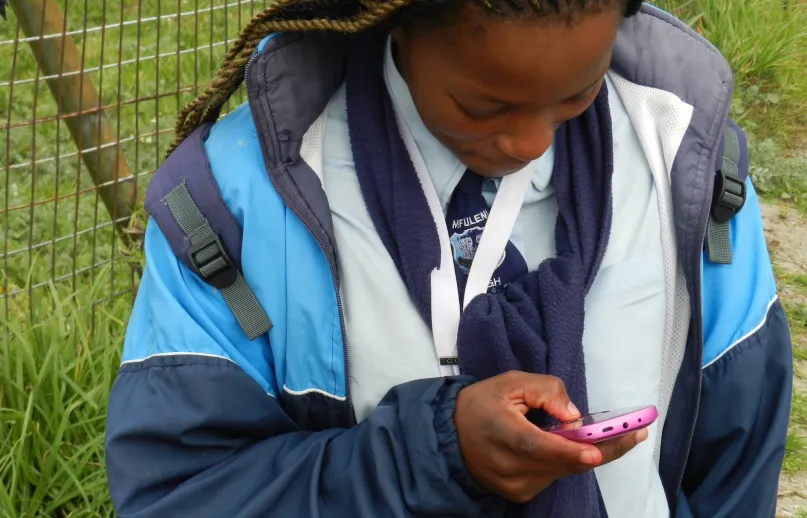Getting It Right: With Mobile for Girls

Mobile offers significant potential to engage people at scale, connecting them to services and solutions that can improve their everyday lives. The rise of mobile banking products, such as Safaricom’s mPesa in Kenya and other digital financial services, show that overcoming specific contextual challenges and responding to the demand of low-income people at scale, requires digitally-led solutions.
As young women in developing countries are more likely to be working in informal, low-income and high-risk work, and are disproportionately affected by poverty, discrimination and exploitation, they are a key demographic facing financial exclusion.
In launching the digital platform Trust Girls, in partnership with the United Nations Capital Development Fund (UNCDF) and Uganda’s Finance Trust Bank (FTB), we explored digital approaches to improving demand for digital financial services amongst this group.
Trust Girls is a pilot digital community of young girls aged 10-24 in low-income families in urban Kampala, Uganda, that links to FTB’s youth-targeted financial and non-financial services. Girls come to this feature phone-ready digital hub to connect, share, exchange and learn about themselves and about money management. Through engaging digital behavior change strategies, the platform drives not only demand for but also sustained use of FTB’s products among this particularly vulnerable group.

Safeguarding is always a priority concern: while promotion for the platform is girl-focused, we can’t fully guarantee only females access the site. In onboarding workshops, we therefore encourage girls to own their digital space and watch out for each other, and through close moderation of all areas of the site we can monitor any safeguarding risks. Users can’t talk privately to each other, meaning girls are less at risk of predatory behavior. About half our users are on family devices, so their data and actions on the site are protected by a login wall.
In the six-month pilot, we registered nearly 1,600 users, about a third of whom were under 18. By the end, over 340 (around 20 percent) were actively saving and had accumulated, on average, a few dollars each. We recognize that there’s a lot more to do to achieve sustainable, scalable change, and the successful pilot is paving the way for bigger and better partnerships and approaches.
So, five months into an eight-month pilot of this “consumer network” of adolescent girls, what have we learned about empowering young girls with better financial knowledge and savings behavior?
1. Human-centered, adaptive processes are not just valuable for successful change and adoption; they are critical. As a digital company working in low and middle-income countries, we advocate for flexible, user-centered design. Research data on digital financial service uptake and financial security only tells one side of the story. Without knowing how girls engage socially in the digital space, what they talk about and the kind of content they would respond to, we could not have designed a platform that was appealing, accessible and useful to our users.
We didn’t get it 100 percent right in the first instance. Feedback from girls on the role of the community moderator, for example, told us we needed to give the moderator more personality, so we created a profile and persona that the girls could relate to and trust.
2. The socio-cultural and economic factors that drive financial exclusion are complex, so the solutions must be holistic. Trust Girls content (articles, quizzes, surveys, and e-learning) centers on the complex intersection of sexual and reproductive health and financial independence. This is a tricky area to navigate, but we couldn’t ignore the critical gender dynamics that young girls in poverty face. And we found that girls instantly related to this type of content, making it a strong point of leverage for the platform. Trust Girls users expressed fears around being financially dependent on boyfriends or family members, and by introducing mobile banking products and empowering girls with basic financial literacy, we are offering the tools to address this.
3. Don't underestimate the value of digital peer networks and social learning in driving change in low-income groups. We saw an active social community develop very rapidly, and message boards quickly filled up with expressions of support and encouragement, requests for advice and responses, and requests for new/additional/different platform features on topics within and beyond financial management, sexual health, and relationships. Super users emerged, who would organically take on a mentoring role to help other girls. Harnessing this energy, at scale and through digital, has enormous potential.
4. As with all social and behavioral change approaches, the key to driving meaningful change is engagement over time. Mobile is no different. We saw that girls engaged with content and responded to calls to action on the platform with little prompting. However, to really drive outcomes in the long term, we needed to build trust and maturity in the community over time, and build evidence of successful approaches. We have built trust in our community through relatability, by using young female ambassadors in workshops and a female moderator persona, and by working closely with the trusted FTB brand in our frontline work.
UNCDF is the UN body working to unlock public and private finance for the poor, based in Brussels, Belgium. Finance Trust Bank in Uganda is a private banking institution based in Kampala, putting women at the forefront of its consumer strategy.


